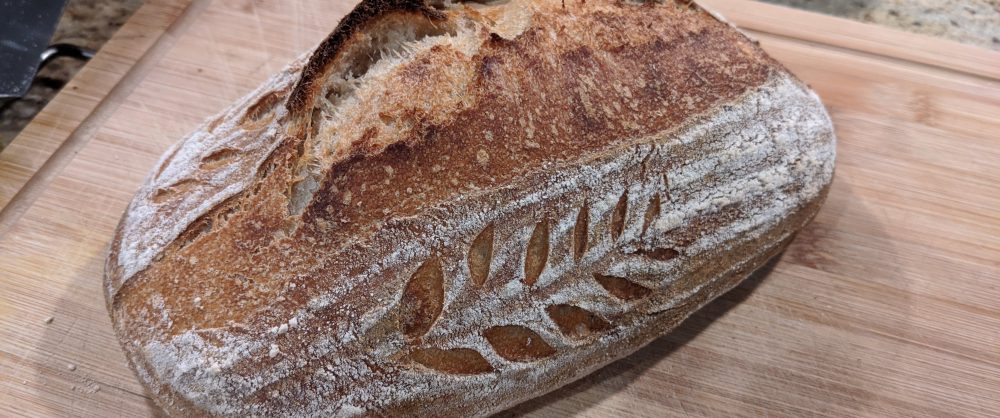
The picture above shows two loaves I created from the same base dough (77% hydration). I proofed the loaf on the right at room temp (~80-degrees), and the one on the left I proofed for 30 minutes at room temperature then popped it in my dough retarder for an hour to not just slow down the proof but to chill the dough.
Based on the final results, chilling a slack, high-hydration dough maintains the shape much better whereas not chilling that same dough will spread out. Both loaves are roughly the same height, though the left-hand loaf is just a tad taller. But the big difference is that the chilled loaf has much more consistent vertical spring throughout the entire loaf, and did not expand length-wise. It did expand a bit width-wise, but that’s okay. I expected that to happen with my scoring. As you can see, the bread really opened up where I slashed it.
To be open and honest, I didn’t come up with this idea. I happened to be reading a blog post last night where the author suggested chilling a nearly-proofed loaf for about an hour in the fridge. The thinking was that it would chill the outside skin of the loaf and be much easier to score. I had to try it today and the results speak for themselves.
While there’s plenty of oven spring – and I’m actually expecting a nice, open crumb with both loaves – there’s not as much spring as I would get with regular white bread flour. The base dough was made with that high-extraction bread flour that contains more of the wheat kernel than regular bread flour. And even though it has a high protein content at 14.7%, the fact that there is more bran and germ in the flour affects the overall structure. Given that, I’m probably going to have to fortify the flour with some vital wheat gluten. But that said, I will be chilling all my high-hydration doughs from here on out or even doing overnight proofing.
Working out things like this is what has made my bread making journey so rewarding. I have fewer and fewer outright fails now than when I did in the beginning. But now, even my less than ideal loaves are much smaller “fails.”
As Mel Gibson said in the movie The Patriot, “Aim small, miss small.” For me, improving my technique has been about making little changes. With this particular experiment it was about tweaking one little thing – temperature. And that one small thing produced tremendous results!
